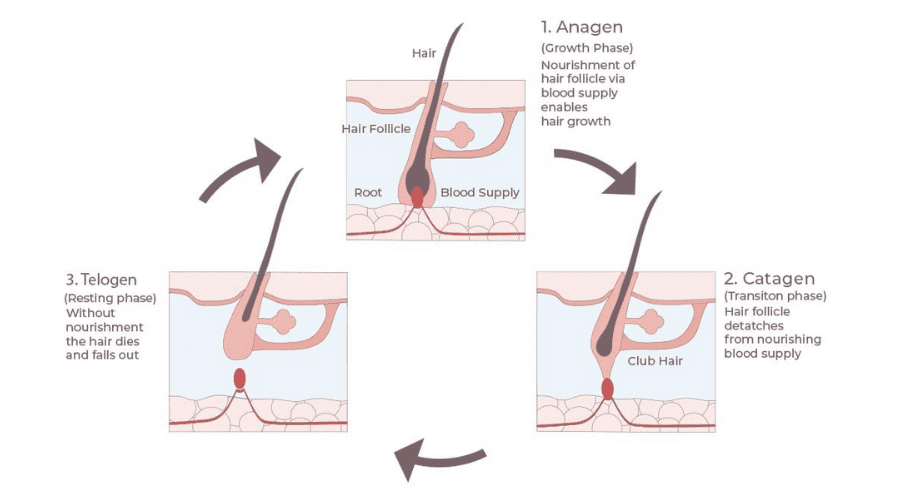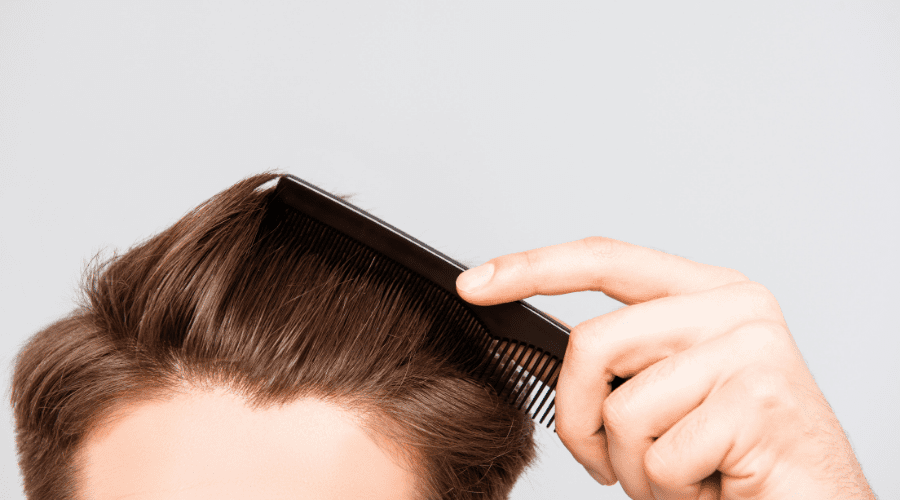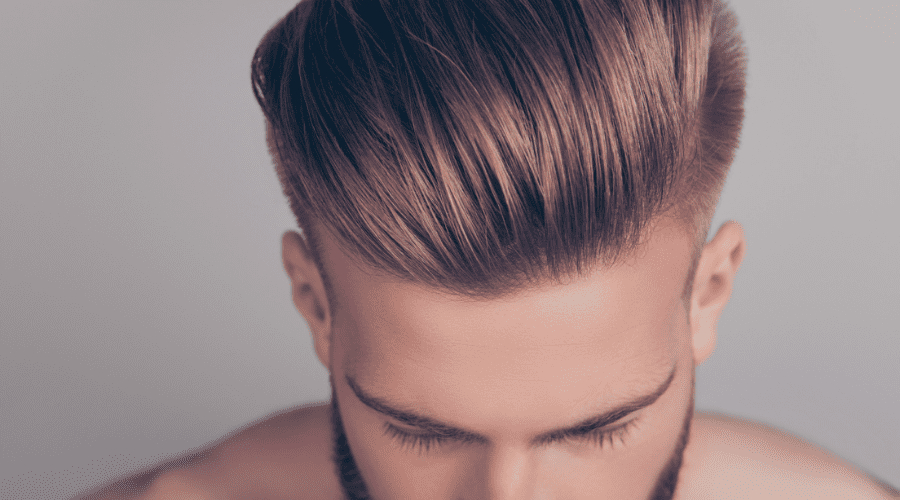Did you get a bad haircut and wondering when it will grow long again? Perhaps you usually shave but want to grow a beard now. Or maybe you want to know how often you need to wax in order to keep your back hair-free.
There are many reasons why you might want to know how long it takes for hair to grow back, and there are some differences to note depending on where the hair is on your body. Below we will discuss the average time it takes for hair, facial hair, and body hair to grow and the factors that determine the growth rate.
The Structure of Hair and Stages of Hair Growth
The anatomy of hair is split into two parts: the follicle, which is beneath the scalp and includes the bulb and papilla, and the shaft, which is the actual hair growing out of the follicle. Now that we know the basic structure of hair, let’s look at the 3 stages of hair growth.

1 – Anagen (Growth Stage): This is the stage of hair growth during which the hair is active – or growing – and lasts anywhere between 2 to 8 years (for scalp hair), 2 to 4 months (for facial hair) and 2 to 6 weeks (for body hair). During the anagen stage, the cells in the bulb begin to divide, prompting the growth of new hair. The hair is nourished by blood supply from the papilla.
2 – Catagen (Transition Stage): During the catagen stage, the hair begins to stop growing. This is a short stage lasting as little as 2 to 6 weeks. At this point, the hair becomes detached from the blood supply and is no longer nourished. These hairs are known as ‘club hairs’.
3 – Telogen (Resting Stage): The telogen stage is a resting period during which the club hairs now remain in the root, with new hair growing beneath. This stage lasts around 3 months and as the new hair grows, the club hair eventually falls, so the fresh hair can take its place.
This is an ongoing cycle that follows us through life, and it’s worth knowing that at any time, some 90% of the 100,000 or so follicles on your head are in the anagen stage.
But why does the hair on your body not grow to the same length as that on your head? It’s quite simple: while body hair does follow the same three-stage sequence, it completes it in around 2 months as opposed to several years. This is why your body hair remains short.
Average Time for Hair to Grow Back

So now that we know the technical stuff, how long does it take hair to grow back? Here are some practical examples:
After a Haircut: The hair on your head grows, on average, at a speed of half an inch every month (slightly slower for the ladies I’m afraid) or 6 inches in a year.
After Facial Shaving: When you shave, you are only removing the hair shaft and not the follicle itself. This is why it’s common to see stubble appearing in a couple of days. Similar to your scalp, facial hair grows at about half an inch per month, but the growth cycle is shorter, so it will not reach the same lengths as hair on your head. A full beard on average takes 1 to 4 months to grow out.
After Body Waxing: With a wax, you remove the root as well as the follicle, which means it takes longer to grow back. If you are looking to maintain a hair-free look, you should expect to wax again 3 to 6 weeks later.
After Hair Loss: There are many different causes of hair loss. Pattern hair loss, for example, is when the follicles stop producing hair. Usually, this type of hair loss results in baldness in men and thinning out in women and unfortunately is permanent. However there are many treatments out there to help hide the baldness like scalp micropigmentation.
Factors Behind the Speed of Hair Growth

Hair needs nutrition to grow – we’ll talk more about that later on – and there are many factors that actively influence the speed at which your hair grows. Among these, the genetic differences between each of us is a major factor; quite simply, some of us have hair that grows faster than others. Also, hormonal changes – especially as we grow older – can influence hair growth.
Other factors include the diet of an individual, as a well-balanced diet with the right nutrients will help hair growth, and also their general health. A healthy body means healthy hair, and the growth of hair can be affected by many ailments and diseases, and also by some medications. How can you give your hair the bests chance at growth? The following are some methods you could experiment.
How to Help Hair Grow Faster

Here are the best tips to helping your hair grow faster and remain healthier:
- A healthy diet will give your hair the nutrients it needs to grow, so make sure you stick to fresh food and steer away from tempting fast food offerings!
- Avoid excessive heat on the hair, as this will damage the follicles.
- Wash with a good shampoo that is designed to give the scalp more nutrients, and massage it in when washing.
- Trim every few months to remove split ends.
- Avoid using ties for pony tails and such, as they put extra pressure on the hair.
- Smoking tobacco is not good for the hair, so now is the time to stop if you’ve been looking for a reason!
- Ask your doctor about possible supplements for hair regrowth.
The above are some of the most common paths people take when trying to grow lush and healthy hair, but bear in mind what we said early on: some of us are genetically restricted by having slow hair regrowth rates, so while it will come back, you might have wait longer than others!

